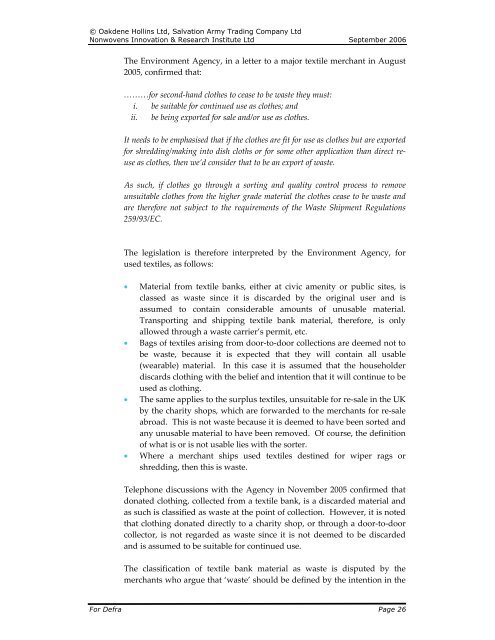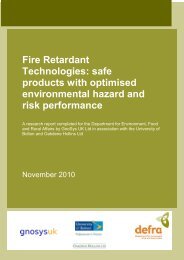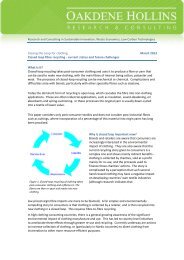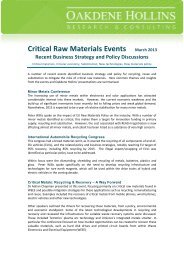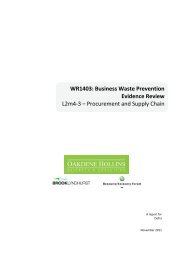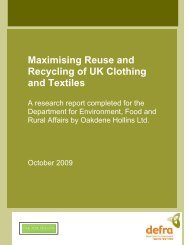Recycling of Low Grade Clothing Waste - Oakdene Hollins
Recycling of Low Grade Clothing Waste - Oakdene Hollins
Recycling of Low Grade Clothing Waste - Oakdene Hollins
Create successful ePaper yourself
Turn your PDF publications into a flip-book with our unique Google optimized e-Paper software.
© <strong>Oakdene</strong> <strong>Hollins</strong> Ltd, Salvation Army Trading Company Ltd<br />
Nonwovens Innovation & Research Institute Ltd September 2006<br />
The Environment Agency, in a letter to a major textile merchant in August<br />
2005, confirmed that:<br />
………for second‐hand clothes to cease to be waste they must:<br />
i. be suitable for continued use as clothes; and<br />
ii. be being exported for sale and/or use as clothes.<br />
It needs to be emphasised that if the clothes are fit for use as clothes but are exported<br />
for shredding/making into dish cloths or for some other application than direct reuse<br />
as clothes, then we’d consider that to be an export <strong>of</strong> waste.<br />
As such, if clothes go through a sorting and quality control process to remove<br />
unsuitable clothes from the higher grade material the clothes cease to be waste and<br />
are therefore not subject to the requirements <strong>of</strong> the <strong>Waste</strong> Shipment Regulations<br />
259/93/EC.<br />
The legislation is therefore interpreted by the Environment Agency, for<br />
used textiles, as follows:<br />
• Material from textile banks, either at civic amenity or public sites, is<br />
classed as waste since it is discarded by the original user and is<br />
assumed to contain considerable amounts <strong>of</strong> unusable material.<br />
Transporting and shipping textile bank material, therefore, is only<br />
allowed through a waste carrier’s permit, etc.<br />
• Bags <strong>of</strong> textiles arising from door‐to‐door collections are deemed not to<br />
be waste, because it is expected that they will contain all usable<br />
(wearable) material. In this case it is assumed that the householder<br />
discards clothing with the belief and intention that it will continue to be<br />
used as clothing.<br />
• The same applies to the surplus textiles, unsuitable for re‐sale in the UK<br />
by the charity shops, which are forwarded to the merchants for re‐sale<br />
abroad. This is not waste because it is deemed to have been sorted and<br />
any unusable material to have been removed. Of course, the definition<br />
<strong>of</strong> what is or is not usable lies with the sorter.<br />
• Where a merchant ships used textiles destined for wiper rags or<br />
shredding, then this is waste.<br />
Telephone discussions with the Agency in November 2005 confirmed that<br />
donated clothing, collected from a textile bank, is a discarded material and<br />
as such is classified as waste at the point <strong>of</strong> collection. However, it is noted<br />
that clothing donated directly to a charity shop, or through a door‐to‐door<br />
collector, is not regarded as waste since it is not deemed to be discarded<br />
and is assumed to be suitable for continued use.<br />
The classification <strong>of</strong> textile bank material as waste is disputed by the<br />
merchants who argue that ‘waste’ should be defined by the intention in the<br />
For Defra Page 26


